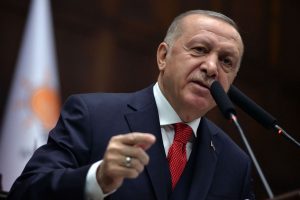The Mughal-era Dara Shikoh Library in Delhi is being converted into a 1947 Partition Museum by the Delhi government.
The second such museum in India will have seven galleries to explain the events leading up to partition and Independence, the migration, refugees, rebuilding homes, art, relationships and a gallery of hope and courage. It will also feature a virtual reality experience, donated belongings of partition witnesses, and a souvenir shop.
Advertisement
The library, built in 1637, will also serve as a cultural hub with exhibitions on different aspects of the city and its history. The museum is due to be opened soon.
Deputy Chief Minister Manish Sisodia, during a visit to the upcoming museum on Friday, inspected the site’s progress. He interacted with curators who provided him with a rundown of the work that had been completed on the project.
Speaking on the occasion, he said that historical buildings across Delhi symbolise the country’s evolution over a period of time, adding that the Delhi government has prioritised restoring these landmarks to help generations understand the country better.
Sisodia noted that there could not have been a better place than the Dara Shikoh Library building to house the Partition Museum. He said the museum would endeavour to depict the memories of the 1947 Partition as experienced by the people and that the period transformed Delhi significantly. Major parts of the national capital, including areas like Lajpat Nagar, CR Park, and Punjabi Bagh, were established after the Partition, he added. The museum’s opening will also coincide with the 76th anniversary of Indian independence.
The museum will feature seven custom galleries designed to explain all aspects of India’s partition and the Independence struggle to visitors. The museum would offer an immersive virtual reality experience, which would allow visitors to explore partition memories from the people. Witnessing the same rail coaches, ancient havelis, and replicas of refugee camps would be exciting and nostalgic for many.
The deputy chief minister further explained that to provide a real-time experience to the visitors, the witnesses of partition had donated various belongings such as clothes, utensils, books, and belongings from refugee camps to the museum. It will also have a special gallery dedicated to Sindh.
Moreover, Sisodia shared that the museum would also include a “Gallery of Hope and Courage,” which would display photographs, mementos, and experiences of people revisiting their ancient properties and places in Pakistan decades after the Partition. The photographs and mementos have been donated to the museum by witnesses of the Partition themselves.
He also stated that in addition to the museum, the Dara Shikoh Library building would be converted into a hub for curated cultural experiences. It will display narratives and exhibitions on different aspects of the city and the individuals associated with it. Along with the museum, the building would have a cafeteria, souvenir shop, small library, and a reading area.
The deputy chief minister’s visit was aimed at taking stock of the project’s progress and to provide inputs to the curators on how to make the museum an even more engaging experience for visitors. He expressed his satisfaction with the work done so far and said that the museum would be a great addition to the city’s cultural and historical landscape.
















